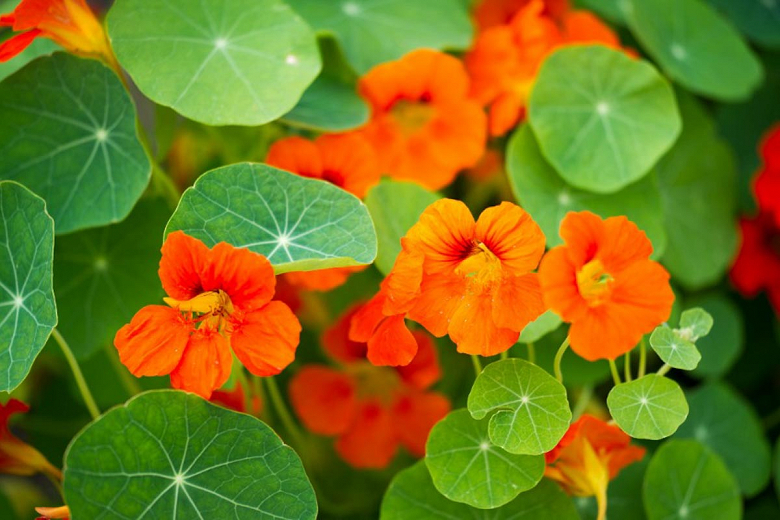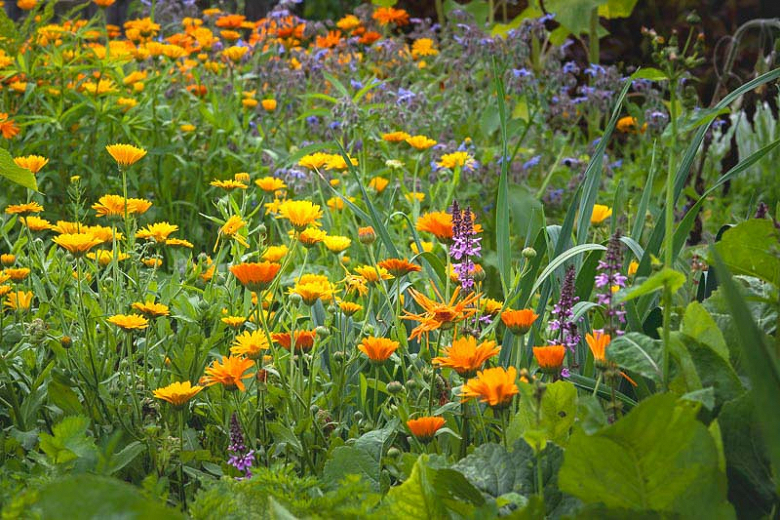The Best Companion Plants For Calendula
The Best Companion Plants for Calendula
Calendula is a beautiful and versatile flower that can be used in a variety of ways. It's also a great companion plant for other vegetables and herbs. In this blog post, we'll discuss the benefits of companion planting with calendula and share some of the best companion plants to grow with it.
Benefits of Companion Planting with Calendula
There are many benefits to companion planting with calendula. Here are a few of the most notable:
- Attracts pollinators. Calendula is a great attractor of pollinators, such as bees, butterflies, and ladybugs. These beneficial insects help to pollinate your crops, which can lead to a better harvest.
- Repels pests. Calendula also has insect-repelling properties. It can help to deter pests such as aphids, whiteflies, and nematodes.
- Improves soil health. Calendula helps to improve soil health by adding nutrients and organic matter. It also helps to suppress weeds.
- Enhances flavor. Calendula can also enhance the flavor of some vegetables, such as tomatoes and cucumbers.
Best Companion Plants for Calendula
There are many different plants that can be grown as companion plants with calendula. Here are a few of the best:
- Asparagus. Asparagus is a good companion for calendula because it helps to repel aphids.
- Beans. Beans are another good companion for calendula, as they help to attract pollinators.
- Carrots. Carrots and calendula can be grown together to help deter pests such as carrot fly.
- Cucumbers. Cucumbers and calendula can be grown together to help improve the flavor of the cucumbers.
- Potatoes. Potatoes and calendula can be grown together to help repel nematodes.
- Tomatoes. Tomatoes and calendula can be grown together to help attract pollinators and improve the flavor of the tomatoes.
Other Companion Plants
In addition to the plants listed above, there are a number of other plants that can be grown as companion plants with calendula. Some of these include:
- Basil
- Dill
- Lavender
- Marigolds
- Nasturtiums
- Petunias
- Roses
- Sage
- Thyme
Conclusion
Calendula is a great companion plant for a variety of vegetables and herbs. It's easy to grow and has many benefits, including attracting pollinators, repelling pests, improving soil health, and enhancing flavor. If you're looking for a way to improve your garden, consider planting calendula alongside your other crops.
Calendula is a beautiful and versatile herb that can be used for both culinary and medicinal purposes. It is also a great companion plant, meaning that it can help to deter pests and diseases from other plants in your garden.
If you are interested in learning more about calendula companion plants, I recommend visiting Gardenia Inspiration. This website has a wealth of information on the topic, including lists of plants that are compatible with calendula, as well as tips on how to plant and care for these plants together.
FAQ of calendula companion
Q1: What is calendula companion planting?
A: Companion planting is the practice of planting certain plants together to benefit each other. Calendula is a good companion plant for many other vegetables and herbs, as it can help to repel pests, attract pollinators, and improve soil health.
Q2: What are some good companion plants for calendula?
A: Some good companion plants for calendula include:
- Beans: Calendula can help to repel aphids, which are a common pest of beans.
- Carrots: Calendula can help to improve the flavor of carrots.
- Cucumbers: Calendula can help to repel cucumber beetles, which are a common pest of cucumbers.
- Onions: Calendula can help to repel onion maggots, which are a common pest of onions.
- Peas: Calendula can help to improve the yield of peas.
Q3: How does calendula benefit other plants?
A: Calendula can benefit other plants in a number of ways, including:
- Repels pests: Calendula has a strong scent that can help to repel pests such as aphids, beetles, and moths.
- Attracts pollinators: Calendula is a magnet for pollinators such as bees, butterflies, and hummingbirds. These pollinators help to pollinate other plants in the garden, which can boost their yield.
- Improves soil health: Calendula is a nitrogen-fixing plant, which means that it can help to improve the nitrogen content of the soil. This can benefit other plants in the garden, as they will be able to access more nitrogen.
Q4: How do I plant calendula companion plants?
A: When planting calendula companion plants, it is important to consider the needs of both plants. For example, if you are planting calendula with beans, you will need to make sure that the beans have enough sunlight and water. You will also need to space the plants appropriately, so that they have enough room to grow.
Q5: What are some common mistakes to avoid when planting calendula companion plants?
A: Some common mistakes to avoid when planting calendula companion plants include:
- Planting calendula too close to other plants. Calendula can spread quite a bit, so it is important to give it enough space to grow.
- Planting calendula in the shade. Calendula needs full sun to thrive.
- Not watering calendula regularly. Calendula needs moist soil to grow well.
Image of calendula companion
- Nasturtium: Nasturtiums are a great companion plant for calendula because they attract beneficial insects, such as ladybugs and hoverflies, which help to control pests. They also have similar growing conditions, so they can be planted together without competing for resources.

- Marigold: Marigolds are another good companion plant for calendula. They also attract beneficial insects and have similar growing conditions. Additionally, marigolds can help to deter pests, such as nematodes and aphids.

- Lavender: Lavender is a beautiful and fragrant plant that can also be a good companion for calendula. It helps to repel pests, such as mosquitoes and moths, and it can also help to improve the flavor of calendula flowers.

- Chamomile: Chamomile is a calming and relaxing herb that can also be a good companion for calendula. It helps to attract beneficial insects, such as bees and butterflies, and it can also help to improve the flavor of calendula flowers.

- Yarrow: Yarrow is a hardy and drought-tolerant plant that can also be a good companion for calendula. It helps to repel pests, such as aphids and spider mites, and it can also help to improve the drainage of the soil.

Post a Comment for "The Best Companion Plants For Calendula"